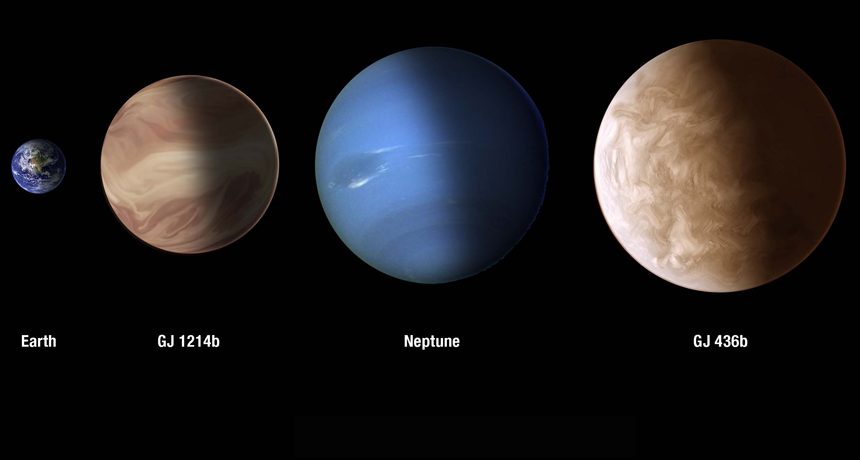Signs of cloudy skies seen in two exoplanet atmospheres

The sizes and skies of GJ 1214b and GJ 436b, shown as artist illustrations, are compared with those of Earth and Neptune.
NASA, ESA

The sizes and skies of GJ 1214b and GJ 436b, shown as artist illustrations, are compared with those of Earth and Neptune.
NASA, ESA